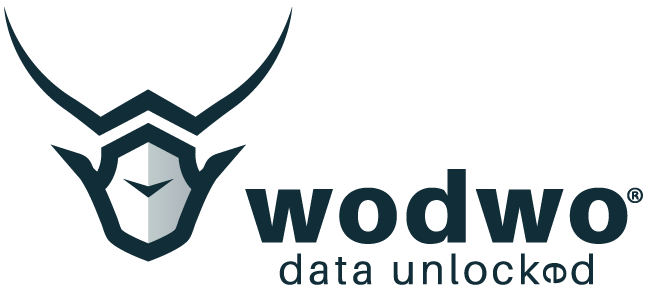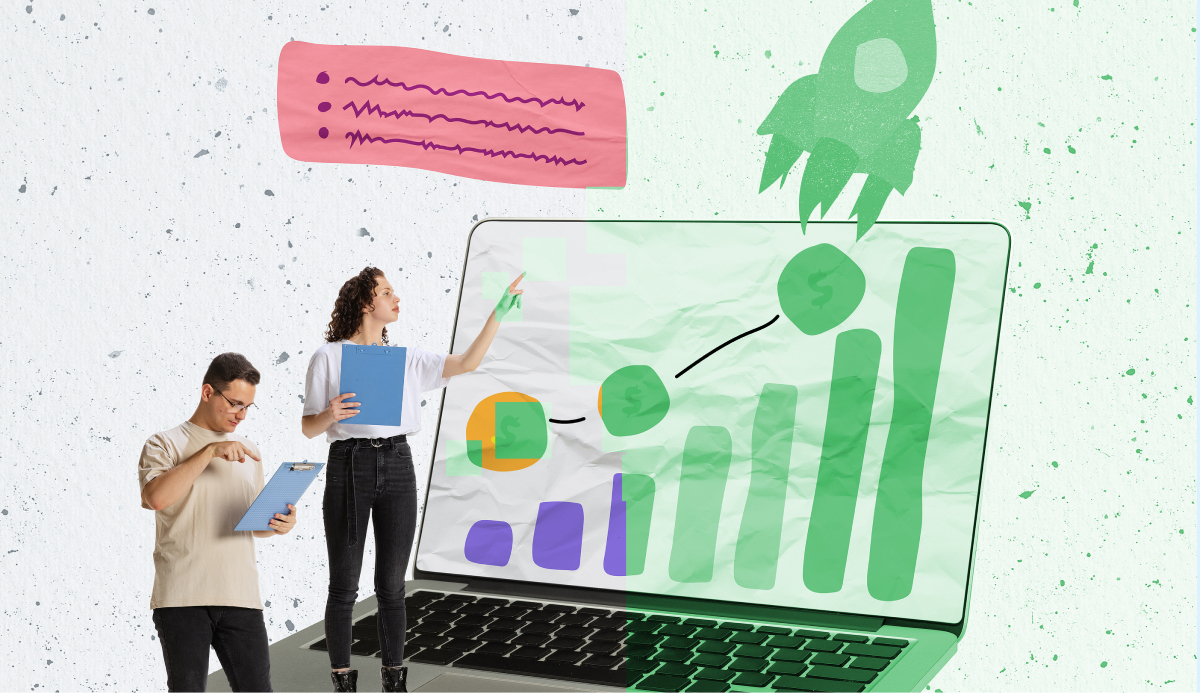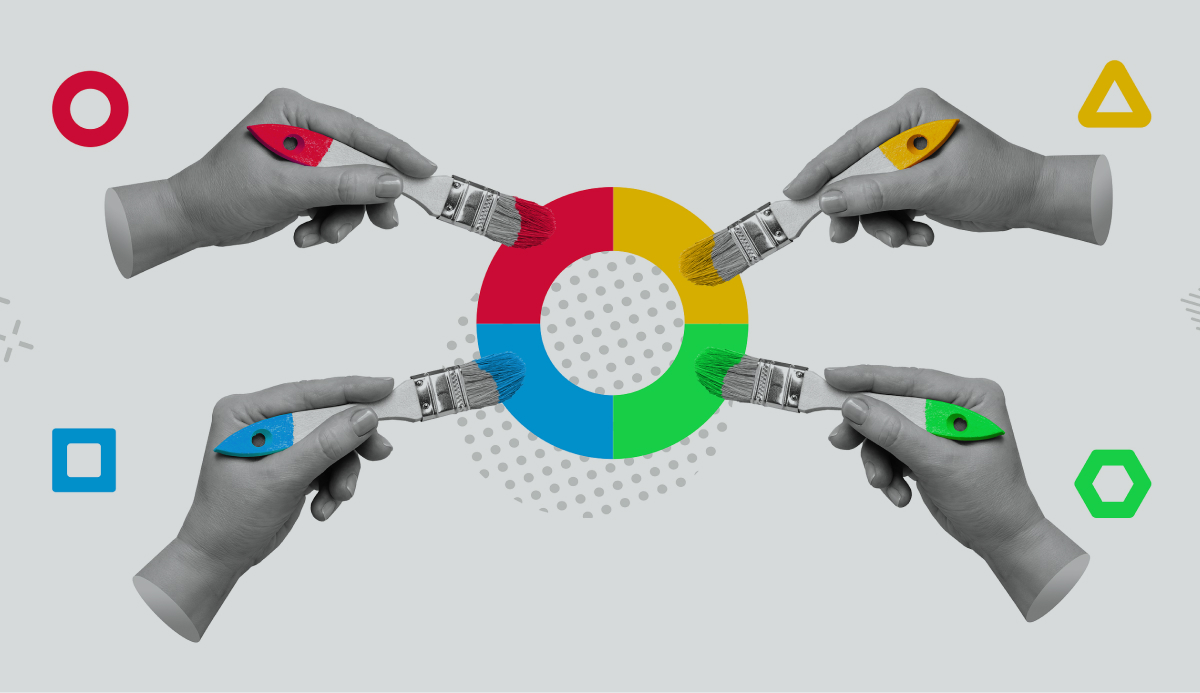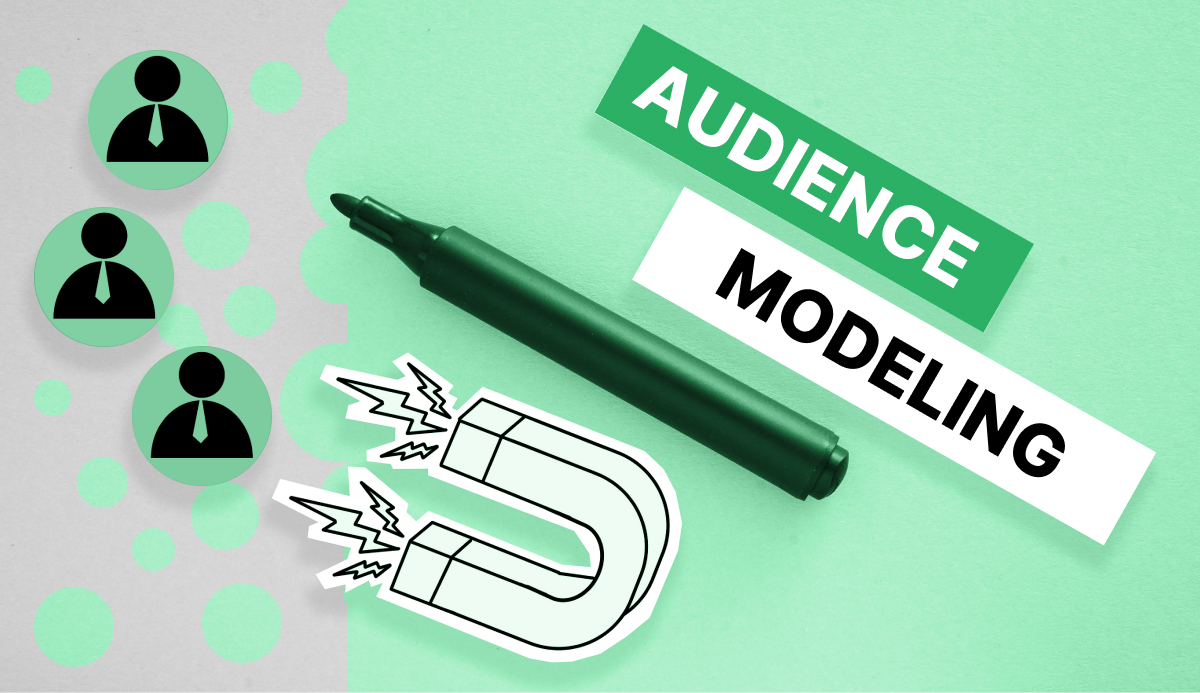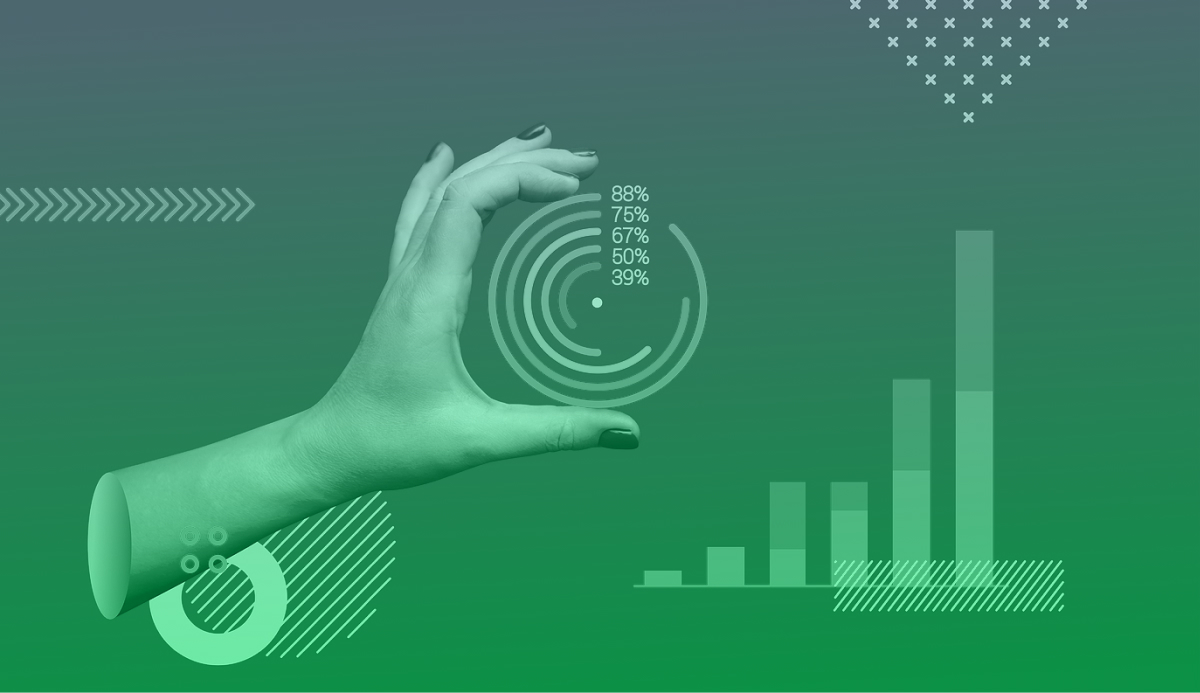
Are you curious about how businesses gain valuable insights into their audience's behavior, preferences, and characteristics? It's all thanks to audience analytics! In this post, we're going to dive into the crucial role audience analytics plays in the world of marketing. So, let's get started and uncover the secrets behind this powerful data!
Importance of Audience Insights
First, we need to understand what data is used in audience analytics. The three most commonly used types of data used in audience analytics are:
- Demographic data: age, gender, location, income, and education level
- Psychographic data: focuses on audience attitudes, interests, opinions, and values
- Behavioral data: derived from user actions and interactions, such as website visits, content consumption, purchase history, and social media engagement
Now what can you do with all that data? Well, picture this: audience analytics is like having your own secret weapon for making informed decisions in the business world. It's all about understanding what your audience wants and needs, so you can tailor your products, services, and marketing strategies to hit the bullseye.
Audience analytics also helps you shape your marketing game plan. It's like having a treasure map that guides you to the most relevant target segments and shows you the best messaging and communication channels to use. With this knowledge, you can create personalized campaigns that really speak to your audience, resulting in higher engagement and conversion rates. It's like hitting a home run every time!
Oh, and let's not forget about content creation. Audience insights are like having your very own genie that reveals the topics, formats, and channels that your audience is dying to see. By delivering relevant and valuable content, you can attract and keep your target audience hooked, building brand loyalty and earning street cred.
Here's the real kicker: Audience analytics lets you track and measure the effectiveness of your marketing campaigns in real-time. It's like having a superpower that allows you to see how your audience is responding. With this knowledge in hand, you can make data-driven adjustments on the fly, optimizing your campaign performance and scoring that sweet return on investment (ROI).
Ethical Considerations in Gathering Audience Insights
Alright, let's address the big elephant in the room: data privacy. When it comes to collecting audience data, we can't just sweep privacy under the rug. It's absolutely crucial to make it a top priority and play by the rules of the game, like the General Data Protection Regulation (GDPR) or the California Consumer Privacy Act (CCPA).
Businesses need to get proper consent from their audience when collecting data. It's like asking for permission before peeking into someone's diary. When necessary, anonymizing the data is key. We don't want anyone snooping around and getting their hands on sensitive info.
That's not all, though. We have to use that audience data in an ethical and responsible way. Transparency is key here. Be upfront with your customers about what you're collecting and how you're gonna use it. Remember - only use the data for legit purposes. No funny business!
Now, let's talk about personalized marketing. We have to set some boundaries. In other words, let's avoid being like that nosy neighbor who's always poking around where they shouldn't.
We also have to remember that no discrimination allowed. This means we can't be biased or unfair based on race, religion, or anything else that makes people unique. Let's make sure our analytics practices don't perpetuate bias or contribute to unfair treatment.
Key Components of Audience Analytics and Insights

There are three key components of audience analytics and insight. These include:
- Data Collection and Integration
- Data Analysis Techniques, and
- Visualization and Reporting
What does data collection and integration involve?
Audience data is collected from multiple sources, such as websites, social media platforms, customer interactions, and third-party data providers. This data is gathered and consolidated to create a comprehensive view of the audience. From there you’ll begin integrating audience data with customer relationship management (CRM) systems, web analytics tools, marketing automation platforms, and other relevant data sources. Integration enables a holistic view of the audience by connecting different data points.
What are the best data analysis techniques?
The three best analytics techniques are descriptive, predictive and prescriptive. Once data is collected and integrated, these three data analysis techniques are employed to derive insights.
Descriptive analytics involves summarizing and describing the characteristics and behaviors of the audience. It provides a snapshot of historical data, answering questions such as who the audience is, where they come from, and what actions they have taken.
Predictive analytics uses historical data to forecast future audience behavior and trends. It employs statistical modeling and machine learning algorithms to identify patterns and make predictions about audience preferences, purchasing behavior, and engagement levels.
Prescriptive analytics goes beyond predicting outcomes and provides recommendations on actions to take. By leveraging advanced algorithms, prescriptive analytics suggests the best course of action to optimize marketing strategies, content delivery, and campaign performance.
Understanding visualization and reporting
Communicating audience insights effectively is crucial for decision-making and strategy development. The key components of visualization and reporting in audience analytics include:
- Communicating through visualizations: Visualizations, such as charts, graphs, and maps, help to represent complex data in a more understandable and visually appealing manner. Visualizations make it easier to spot trends, identify patterns, and communicate audience insights to stakeholders.
- Dashboards and reporting tools: Dashboards provide a consolidated view of audience analytics by presenting key metrics and visualizations in a single interface. Reporting tools enable the creation of customized reports that summarize audience analytics findings, allowing stakeholders to access relevant information and track performance over time.
Leveraging data analysis techniques and effectively visualizing and reporting audience insights helps businesses make informed decisions, optimize marketing strategies, and enhance their overall audience engagement and satisfaction.
Unleashing the Potential of Audience Analytics
Audience analytics helps businesses identify different segments within their target audience based on characteristics, behaviors, and preferences. By analyzing data, businesses can uncover patterns and similarities that allow for segmentation, such as demographics, psychographics, and purchasing habits.
With audience insights, businesses can craft targeted marketing messages and campaigns tailored to each segment. By understanding the unique needs, interests, and pain points of different audience segments, businesses can create more relevant and impactful marketing strategies.
Personalization and Customization
Thanks to audience analytics, your business will have access to valuable information about individual preferences, enabling businesses to deliver personalized experiences. By leveraging data on past behaviors, interactions, and preferences, businesses can offer tailored recommendations, content, and offers that resonate with each individual. Audience analytics also allows businesses to dynamically deliver content and product recommendations based on individual preferences. Thanks to machine learning algorithms and real-time data powered by AI systems like Wodwo, businesses can create personalized content experiences and recommend products or services that match each individual's preferences and needs.
Optimizing Marketing Campaigns
Is your marketing campaign effective? Audience analytics can help you determine the answer. Your data holds valuable insights that help you identify which campaigns, channels, and messaging resonate the most with their target audience. This information helps optimize campaigns for improved engagement, conversion rates, and ROI.
Audience analytics allows businesses to conduct A/B testing as well. Comparing different variations of campaigns, messages, or designs will help you to identify the most effective approach. Optimization ultimately leads to enhanced audience engagement, improved customer satisfaction, and ultimately, greater business success.
Applying Audience Analytics in Different Channels
Let’s explore how you can apply audience analytics in the various marketing channels your business likely uses.
Digital Marketing

Applying audience analytics in digital marketing involves maximizing its use in various digital channels:
- Digital Advertising: Audience analytics helps optimize digital advertising by targeting specific audience segments with relevant ads. It enables businesses to understand which ads perform best, track conversions, and refine targeting parameters based on audience behavior and engagement.
- Social Media: Audience analytics plays a crucial role in social media marketing. By analyzing social media engagement, sentiment, and audience demographics, businesses can tailor their content and messaging to resonate with their target audience. Insights from audience analytics help optimize social media campaigns and identify opportunities for increased reach and engagement.
- SEO (Search Engine Optimization): Audience analytics assists in understanding search behavior and preferences. By analyzing keyword data, search trends, and user intent, businesses can optimize their website and content to align with audience interests. This leads to improved visibility in search engine results and increased organic traffic.
Email Marketing
Audience analytics can greatly enhance the effectiveness of email marketing campaigns:
- Targeted Email Campaigns: Audience analytics allows businesses to segment their criteria,lists based on various criteria such as demographics, past interactions, and preferences. By sending targeted emails to specific segments, businesses can deliver highly relevant content and offers, resulting in higher open rates and click-through rates.
- Improving Metrics: Audience analytics helps monitor and optimize key email marketing metrics. Businesses can track open rates, click-through rates, conversions, and other engagement metrics to identify areas for improvement. By analyzing audience behavior and preferences, businesses can refine their email content, timing, and frequency for better results.
Offline Marketing
While audience analytics is commonly associated with digital marketing, it can also be applied to offline marketing channels:
- Traditional Marketing Channels: Audience analytics can be incorporated into offline marketing channels such as print advertisements, direct mail campaigns, and TV/radio ads. By analyzing audience demographics and response rates, businesses can better target their messaging and optimize their offline marketing efforts.
- Tracking Offline Customer Interactions: Businesses can leverage audience analytics to track customer interactions in physical locations, such as retail stores or events. This can be done through loyalty programs, customer surveys, or mobile apps. Analyzing this data provides insights into customer preferences, behaviors, and purchasing patterns, which can inform offline marketing strategies.
Can you see how applying audience analytics across different channels can help a business maximize their marketing efforts and increase revenues both online and offline?
Challenges and Best Practices in Audience Analytics
As with anything in business, there are challenges that do arise with leveraging audience analytics. With that in mind, let’s take a look at the best practices your company should employ when analyzing and using your audience analytics and insights.
Data Quality and Accuracy
Challenges related to data quality and accuracy in audience analytics can be addressed through the following best practices:
- Ensuring data integrity and eliminating biases: It's important to establish data collection processes that minimize errors and biases. Implementing proper data governance practices, conducting regular data audits, and using reliable data sources can help maintain data integrity.
- Data cleaning and validation techniques: Applying data cleaning techniques, such as removing duplicates, handling missing values, and identifying outliers, ensures data accuracy. Additionally, validating data against external sources or benchmarks helps verify its accuracy and reliability.
Skill Sets and Resources
To address challenges related to skill sets and resources in audience analytics, organizations can adopt the following best practices:
- Developing analytics capabilities within the organization: Investing in building analytics capabilities within the organization helps create a data-driven culture. This involves providing training and resources to employees, fostering cross-functional collaboration, and establishing analytics teams or centers of excellence.
- Training and hiring skilled professionals or partnering with analytics providers: Organizations should invest in training their existing workforce on audience analytics techniques and tools. They can also hire skilled professionals with expertise in data analysis, statistics, machine learning, and data visualization. Alternatively, partnering with analytics providers can leverage external expertise and resources.
Continuous Improvement
To address challenges related to continuous improvement in audience analytics, organizations can adopt the following best practices:
- Emphasizing the iterative nature of audience analytics: Recognizing that audience analytics is an ongoing process helps organizations adapt and improve continuously. Regularly reviewing and updating analytics strategies and methodologies based on feedback, market changes, and emerging trends ensures that insights remain relevant and actionable.
- Monitoring and adapting analytics strategies based on changing audience dynamics: Keeping a pulse on changing audience behaviors, preferences, and market trends is crucial. This involves monitoring key metrics, conducting periodic audience research, and using advanced analytics techniques to detect shifts in audience dynamics. Organizations can then adapt their strategies and approaches accordingly.
From Insights to Action: Empowering Marketing with Audience Analytics

Bottom line: Audience analytics is a powerful tool that helps drive marketing success by providing valuable insights about target audiences. It enables businesses to effectively segment and target their audience, personalize experiences, and optimize marketing campaigns, leading to data-driven decisions, improved customer engagement, and better return on investment (ROI). As technology advances, audience analytics is expected to evolve further, with artificial intelligence and machine learning enhancing capabilities for sophisticated analysis and predictive modeling.
However, ethical considerations and data privacy must be prioritized to ensure responsible and compliant use of audience data. To fully harness the potential of audience analytics, organizations should focus on data quality, develop necessary skills and resources, and strive for continuous improvement. By investing in analytics capabilities, training personnel, and partnering with specialized providers, businesses can leverage audience analytics effectively for marketing success.
Sign up for Wodwo audience modeling software today to unlock this power without the need for data scientists. Experience high-quality custom audience models in under an hour using our automated tool and your marketing expertise. Don't miss out on this opportunity to elevate your audience analytics and unleash the full potential of your marketing efforts. Sign up today!
